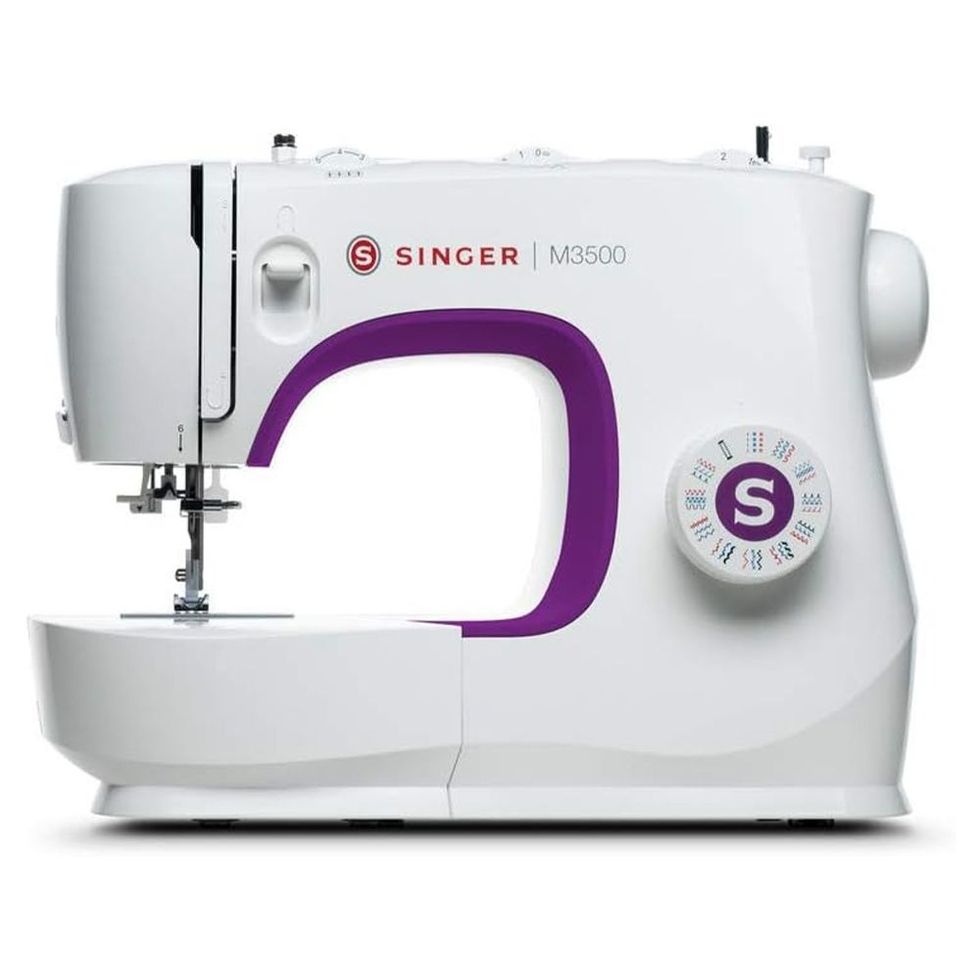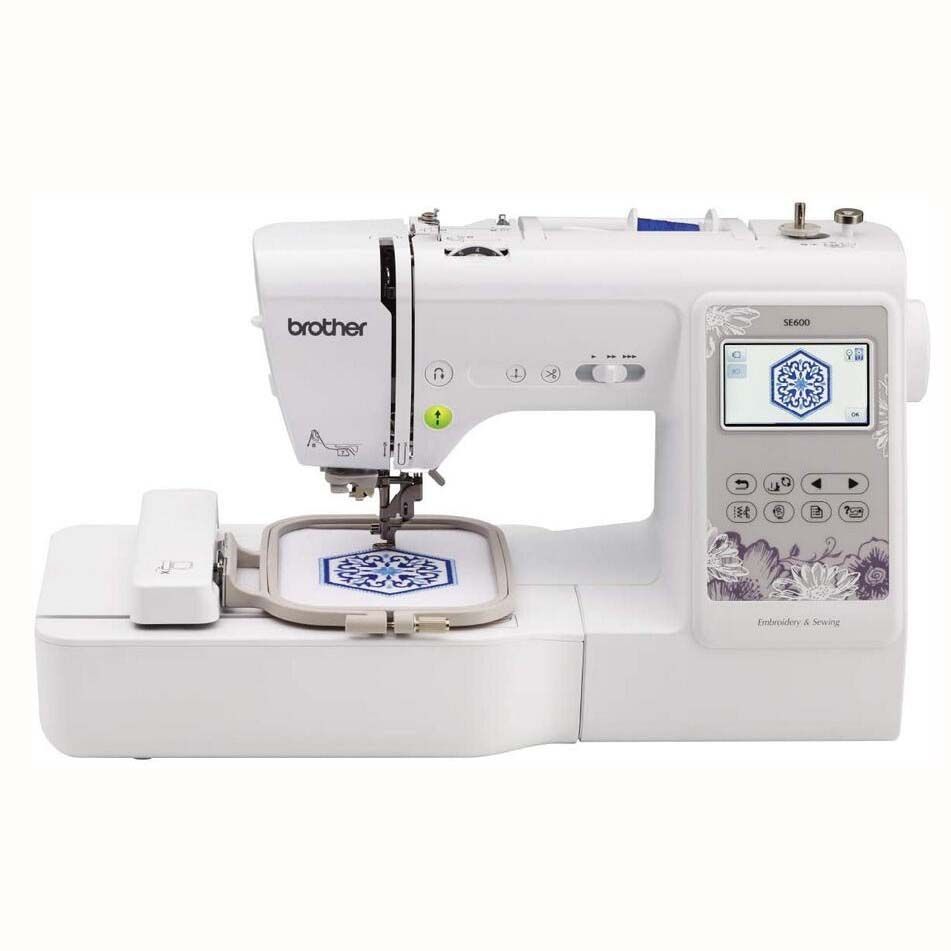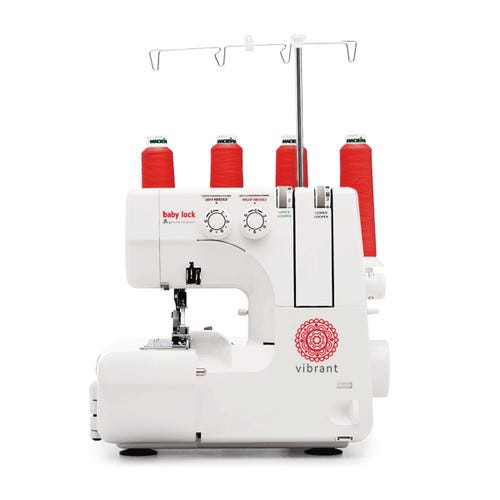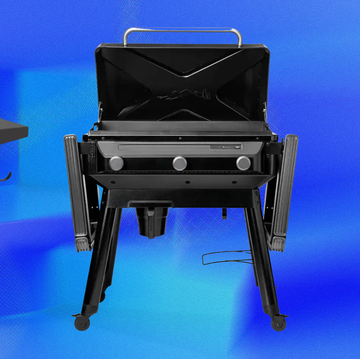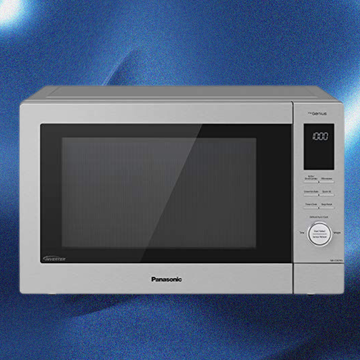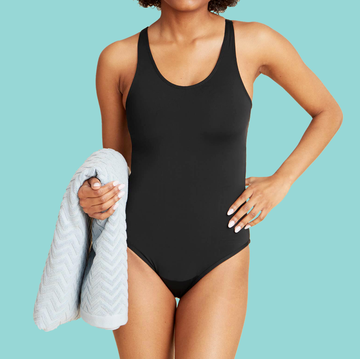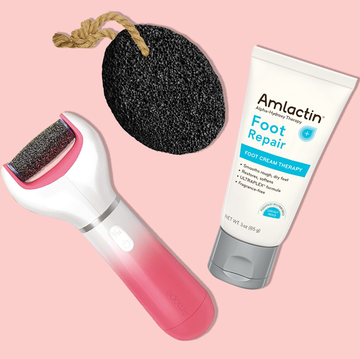The Best Sewing Machines, According to Testing
We tested over a dozen different sewing machines to find the top-performing options.
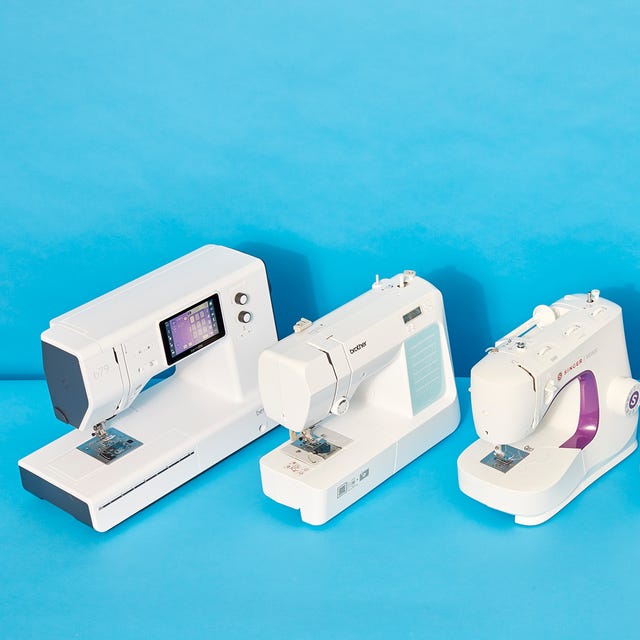
We've been independently researching and testing products for over 120 years. If you buy through our links, we may earn a commission. Learn more about our review process.
For my 12th birthday, I was gifted a sewing machine — and I was immediately hooked. In the years since, I have completed all sorts of sewing projects from stuffed animals, pillows and bags to apparel (including my Bat Mitzvah dress!). I then went to college where I studied fiber science and apparel design. And my love for sewing continues to grow.
Everyone can benefit from owning a sewing machine and knowing how to sew. It allows you to easily hem new pants, fix small holes or tears and even design your dream wardrobe — all without visiting the tailor. When shopping for a sewing machine, ask yourself what's most important to you, whether that's embroidery, quilting or making clothes or maybe you are a beginner who's eager to learn.
At the Good Housekeeping Institute, I have been leading sewing machine testing since 2018. I have tested over 13 different sewing machines, embroidery machines and sergers in the Textiles Lab, evaluating ease of threading, stitch accuracy, innovative features and more. Along with the other textiles analysts, I analyze the construction of each machine to ensure that they're well-built and intuitive to operate. We used different types of fabrics from denim to chiffon with straight and zig-zag stitches to ensure the stitches were even without any imperfections. In addition to Lab testing, we researched top models and brands to find the styles that'll suit your specific sewing needs.
Pros
Wide table included
Speed control capabilities
Easy to thread and wind the bobbin
Cons
The alphabet stitching is very small as this is not an embroidery machine
Even after testing multiple different machines, I continue to reach for this Brother machine for most of my at-home sewing projects. This model combines the simplicity of a beginner machine with excellent features like a clear LCD screen, needle up/down and speed control. It includes a wider table to support bigger quilting and sewing projects. Costing under $250, this sewing machine is an excellent value.
It sewed through a variety of different fabrics with ease, including denim and upholstery fabric. It boasts an intuitive automatic needle threader, too. In our review, the included manual was easy to follow with clear instructions. This machine does offer decorative stitches, but they are very small because it doesn't have embroidery functions.
Type: Computerized | Weight: 10.14 lbs | Built-in stitches: 110 utility stitches, 55 alphanumeric stitches and 8 buttonholes | Bobbin type: Drop-in | Speed: 850 stitches per minute
Pros
Doesn't take up much space
Great for new sewers
Under $200
Cons
Buttonhole function wasn't seamless in testing
If you're in the market for a beginner-friendly option that won't break the bank, this sewing machine might be your best match. You'll spend less than $200 for a small and mighty model that's perfect for tight workspaces. This simple machine is ideal for hemming new clothes and repairing tiny tears and holes.
In our tests, the automatic needle threader was simple to use and can thread your needle in a few easy steps. We were impressed by how well this machine moved through different fabrics, including wool and cotton jersey; it only struggled with delicate fabrics like silk chiffon. During testing, we did notice the one-step buttonhole function got stuck a few times, but it ran smoothly after rethreading.
Type: Mechanical | Weight: 11.79 lbs | Built-in stitches: 32 stitches with 1 buttonhole | Bobbin type: Drop-in | Speed: Not listed
Pros
Easy threading
Multiple presser feet included
Simple, visual controls
Cons
Only six built-in stitches
If you're completely new to sewing and want to buy your first machine — or even gift one to a teen — we recommend the Singer Start 1304. It's a simple machine with easy-to-use controls that won't overwhelm a novice sewer. Its small size (and light weight) makes it perfect to bring to sewing classes, and the metal frame ensures it'll last.
Online reviewers especially appreciated the easily accessible back stitch and the simple visual controls for easy learning. There are multiple presser feet included, but only six built-in stitches.
Type: Mechanical | Weight: 9.8 lbs | Built-in stitches: 6 stitches and 3 buttonholes | Bobbin type: Drop-in | Speed: Not listed
Pros
Size 16 needles sew through tough fabrics with ease
Multiple presser feet including a non-stick foot
Great for everyday sewing too
Cons
No speed control
One of the most popular heavy-duty sewing machines on the market, the Singer Heavy Duty 4452 sewing machine is great for sewing through challenging fabrics like denim and leather. The needles are size 16, which can penetrate multiple layers of thick fabrics like when constructing jeans. A non-stick foot is included for other tougher fabrics like leather and vinyl.
The pressure of the presser foot is adjustable, so you can use less force when sewing lighter weight fabrics. With 32 built-in stitches, this machine is versatile enough for heavy-duty and standard fabrics alike. While it sews impressively fast at 1,100 stitches per minute, there is no speed control.
Type: Mechanical | Weight: 15.7 lbs | Built-in stitches: 32 stitches | Bobbin type: Front loading | Speed: 1,100 stitches per minute
Pros
Automatic thread cutter
Tension automatically adjusts with each stitch change
Easy to change the presser foot
Cons
Some online reviewers struggled with machine repair
This sewing and quilting machine features manual speed controls for those who have difficulty keeping consistent and even pressure when using a traditional pedal. And if you don't like pedals at all, the start-stop function allows you to sew without using the foot control. It has over 600 built-in stitch applications including basic and decorative ones — and with each new stitch you select, the tension is automatically adjusted. Plus, this machine has a needle up/down button, making it easy to pivot the fabric at the corners of quilting squares.
During testing of a similar Singer model, using the automatic buttonhole function was a breeze. We like that it has an impressive 13 different style options programmed into the machine — just select which style you prefer on the LCD screen with the tap of a button. We were impressed with how easy it was to change the presser foot with the quick-snap design.
The automatic needle threader is also simple and easy to use. It includes a large extension table to support bigger quilting projects with bright built-in lighting to see your work clearly. Some online reviewers noted that they had difficulty repairing this machine.
Type: Computerized | Weight: 14.6 lbs | Built-in stitches: 600 stitches and 13 buttonholes | Bobbin type: Drop-in | Speed: 850 stitches per minute
Pros
Quilting capabilities like automatic thread cutting and free-motion sewing
Handles thick layers of fabric
Large table for bigger projects
Cons
Bulky machine; not easily portable
Juki is popular for its sturdy, long-lasting quilting machines that can tackle multiple layers of fabric easily – ideal for sewing large quilts, canvas and other thick fabrics. Some of our GH analysts actually learned how to sew on Juki machines.
This Juki model features a durable metal frame, designed for longevity and easy repairs. It boasts features for quilting like automatic thread cutting, a knee lifter, presser foot pressure adjustment and free-motion capabilities. The bright light makes it easy to see your detail work. Reviewers loved that this advanced machine stays quite still when sewing quickly and makes minimal noise.
There's an extension table for handling larger projects. However, at over 25 pounds, it's a bulky machine that is not easily portable.
Type: Mechanical | Weight: 25.4 lbs | Built-in stitches: 1 stitch | Bobbin type: Front loading | Speed: 1,500 stitches per minute
Pros
80 built-in stitches
Tons of included accessories
Clear LCD screen
Cons
Higher price tag without embroidery and certain quilting capabilities
If you plan to use your sewing machine mainly for fashion sewing, you'll want certain features like free-arm capabilities for sleeves and cuffs, presser feet designed for hems and zippers and a variety of stitches and buttonholes. This Baby Lock model is ideal.
We found it easy to select stitches from the bright LCD screen and it includes a larger stitch guide to make it even easier to know which stitch you need. The machine will even remind you which presser foot to use with each stitch. With great ease-of-use features like adjustable speed, drop-feed capabilities and seven included presser feet, we were impressed with how beautifully this machine sewed over a variety of different fabrics and produced accurate buttonholes every time. Plus, this machine has a maximum sewing speed of 850 stitches per minute for the speedy sewer.
While you get a lot of accessories and features for the high price tag, it doesn't have embroidery and certain quilting capabilities.
Type: Computerized | Weight: 14.4 lbs | Built-in stitches: 80 stitches with 8 buttonholes | Bobbin type: Drop-in | Speed: 850 stitches per minute
Pros
5-inch touchscreen
Thread tie off option (no back stitching necessary)
Ability to design custom stitches
Cons
Most expensive pick in the round-up
If you want to treat yourself to a top-of-the-line model, opt for a luxury sewing machine that can withstand constant use and offers excellent features for an expert sewer. The Bernette brand is synonymous with high quality, and its B79 model offers embroidery, quilting and standard sewing capabilities. We were blown away by the innovative features like automatic thread cutting, a thread tie-off option (no back stitching necessary) and the ability to draw your own stitches on the 5-inch touchscreen with the included stylus.
With a massive library of 500 stitches and 17 buttonhole options, this machine can create your own combinations by remembering your exact stitch specifications for particular fabrics in its short- and long-term memory. It sewed through all types of fabrics with ease, including silk chiffon, polyester satin and wool. Although it is a pricey pick, it’s one of the most affordable Bernette models available.
Type: Computerized | Weight: 47 lbs (with embroidery table) | Built-in stitches: 500 stitches and 17 buttonholes (ability to create custom stitches) | Bobbin type: Drop-in | Speed: 1,000 stitches per minute
Pros
Well-lit work area
Excellent sewing capabilities too
Affordable price for an embroidery machine
Cons
Smaller embroidery area compared to pricier models
Make sure to shop for an embroidery machine, in particular, if you want embroidery capabilities. This model offers excellent features at a reasonable price. We were amazed by how easy it was to set up embroidery designs on the Brother machines we tried.
The large color LCD screen makes it easy to preview and edit all embroidery designs. Although the machine already has 80 built-in designs, there’s a USB port to import your own, plus thousands of options from Brother online to upload. With free motion sewing, a bright work area and an automatic needle threader, this machine can do both embroidery and standard sewing. You can make your own clothes and then personalize them with embroidered designs and text.
This machine offers a 4" x 4" embroidery area to add smaller customizations to your sewing projects and clothes, but it cannot do larger designs like pricier embroidery machines.
Type: Computerized | Weight: 26 lbs | Built-in stitches: 103 stitches and 10 buttonholes | Bobbin type: Drop-in | Speed: 710 stitches per minute for sewing, 410 stitches per minute for embroidery
RELATED: The Best Embroidery Machines
Pros
Retractable thread cutter
Easy to set up for beginners to sergers
Over 30 included accessories
Cons
Some reviewers found the lint trap didn't stay in place
Sewing machines help projects come together, but sergers (also known as overlock machines) finish them with a professional look. This Baby Lock Vibrant Serger helps finish edges with four, three or two thread edges and rolled hems. There’s a retractable thread cutter for easy trimming when finished.
If you’re new to using a serger, this machine has a color-coded thread system to follow to make it easier. The feed and tensions can be adjusted for a personalized experience when sewing on different fabrics. We love that this machine includes over 30 accessories that you’ll need to keep this machine in excellent condition for years to come. Keep in mind that some reviewers found the lint trap didn't stay in place.
Type: Mechanical serger | Weight: 19.8 lbs | Built-in stitches: 2, 3 or 4 threads | Bobbin type: N/A | Speed: 1,200 stitches per minute
How we test sewing machines

We have tested dozens of sewing machines over the years, from machines for beginners to expert-level sewers. To determine which is best for you, we gathered sewing machines from the top brands on the market and tested each in our Lab to see which is worth buying. In our latest test, we tested 13 different machines.
We evaluate each machine based on the following criteria:
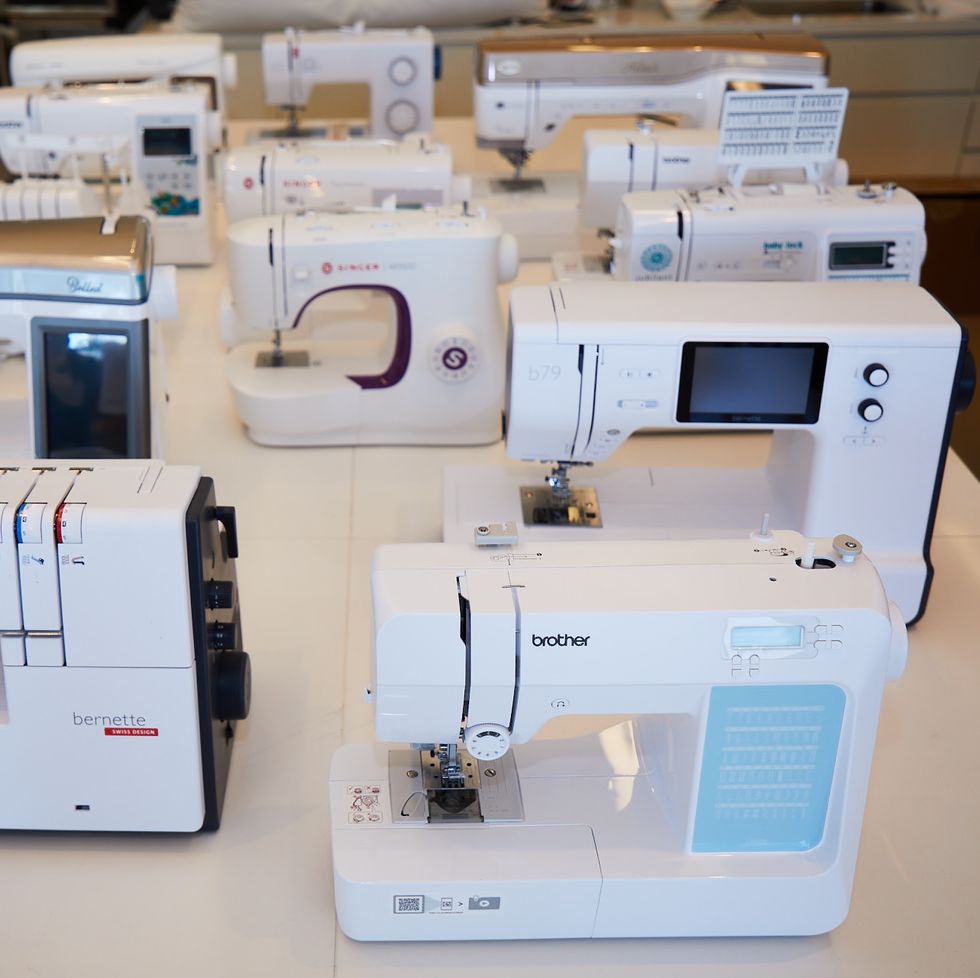
- Ease of use: Setting up your machine can be a difficult task, especially for new sewers. During our tests, we evaluate the readability of each instruction manual and all the accessories that come with every machine. We also evaluate the difficulty of changing the pressure foot, the comfort of pedal buttons and hand wheel as well as changing tension, speed and stitching for each machine.

- Features: Today, sewing machines are becoming more and more advanced so we assess just how many features each one has. When testing, we look for capabilities such as automatic or dial stitch selection, speed control and automatic needle threading. We and compare all features of each.
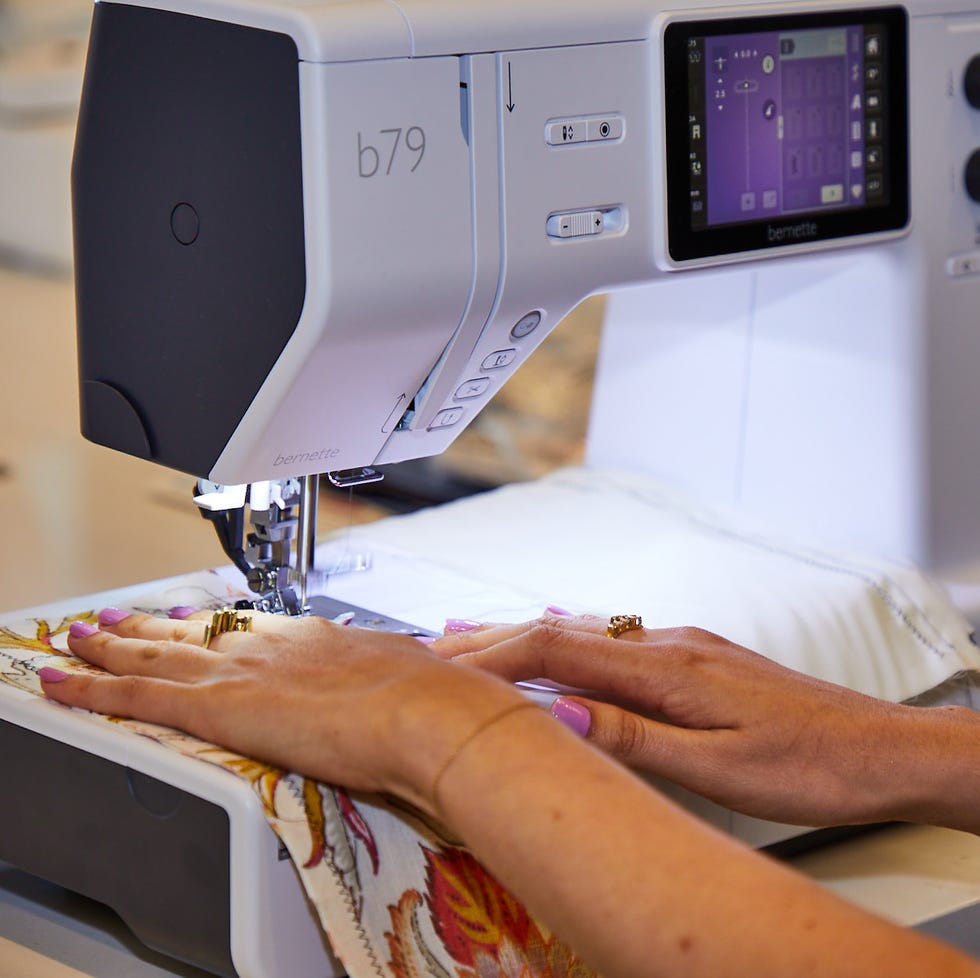
- Performance: For this test, we use each machine on multiple fabrics to determine just how well each machine stitches. During this test, we use both natural and synthetic fabrics of different weights including lightweight cotton, polyester satin, wool, jersey cotton, denim and upholstery-grade fabric. On each fabric, we assess how well each machine performs when making a basic and zigzag stitch by grading imperfections during the stitching process. We also note just how well each machine performs when using multiple layers of fabrics using woven cotton, denim, jersey and cotton batting. Lastly, we create multiple buttonholes with all machines to assess the difficulty and accuracy of each.
What to look for when shopping for the best sewing machine for you

Machines come with lots of different add-ons, accessories and capabilities that may not be relevant to you and just add unnecessary cost, but there may be other features you cannot sew without. Here are some specific features to look at before shopping:
✔️ Type:
- Computerized sewing machines aren't necessarily higher-end or more expensive. It comes down to personal preference of which style you prefer. Computerized machines require more involved repair if they break down but offer more options compared to simpler mechanical machines.
- Mechanical machines focus on simplicity and durability vs. fancy features. Some can be quite pricey.
- Sergers are a type of machine used for sewing, but they use an overlock stitch to bind fabrics together or finish raw edges. They do not have the same functions as a traditional computerized or mechanical sewing machine.
✔️ Number and styles of stitches offered: Beginner sewers will need just two stitches: straight and zigzag. More experienced sewers should look for a wider variety. For example, if you love embroidery or quilting, look for machines that provide those capabilities. If your machine doesn’t offer embroidery or free motion sewing, those features cannot be added later on. Additionally, make sure the machine has the capability to adjust stitch length, zigzag width and tension so you have more control over your sewing.
✔️ Bobbin type: Sewing machines traditionally offered front-loading bobbins, but today, many machines have a drop-in bobbin, which is easier to operate for beginners. Sewing machines with both bobbin types are included in this story — it comes down to what you prefer.
✔️ Included accessories: Most machines include a bobbin and a presser foot, but some include much more. For the most bang for your buck, check if the machine includes a zipper foot, buttonhole foot, embroidery foot, removable extended work table and an area for storage. We especially love when machines include a clear manual or have excellent online offerings like how-to video demos and project ideas.
✔️ Extra features: Some machines include specific capabilities that can make sewing a whole lot easier like a thread cutter, automatic needle threader, lights, free arm, blind stitching, thread tie-off and buttonhole capabilities. Once you have them, sometimes you cannot imagine sewing on a machine without them.
✔️ Frame construction: For the longevity of the machine, look for a metal frame option. Plastic frames are common but can deteriorate quickly and be more difficult to repair. Some machines have manual back stitch and presser foot up/down while others are computerized; computerized options will likely require more complicated repair if they stop working.
✔️ Machine weight and size: Sewing machines can vary in size and weight dramatically — we tested machines that are under 5 pounds and others over 70 pounds! If you plan to bring your machine to sewing classes or quilting groups, look at the machine's weight and carrying features like a handle or included case. We recommend confirming that the machine's dimensions will fit properly in your sewing space (consider the size of an extension table if relevant).
✔️ Servicing options: Sewing machines can sometimes break down. Before purchasing a new machine, it can be helpful to confirm that you have local repair options in your area that can service your specific machine. Also make sure to read the included or online manual carefully before sewing, as every machine has slightly different use and care instructions.
Why trust Good Housekeeping?

Emma Seymour is the associate Textiles Lab director at the Good Housekeeping Institute, where she's worked for more than five years, overseeing in-Lab and consumer tests for sewing machines, embroidery machines and sergers. She tested each machine in our Lab alongside other sewing pros to find the top-performing machines. With a degree in fiber science and apparel design from Cornell University, she has extensive sewing experience and product quality expertise. She likes using her Brother and Bernina sewing machines to adjust and update her thrift store finds.
Emma Seymour (she/her) is the associate director of the Good Housekeeping Institute's Textiles, Paper and Apparel Lab, where she has led testing for luggage, pillows, towels, tampons and more since 2018. She graduated from Cornell University with a bachelor of science in fiber science and apparel design and a minor in gerontology, completing research in the Body Scanner Lab on optimizing activewear for athletic performance.
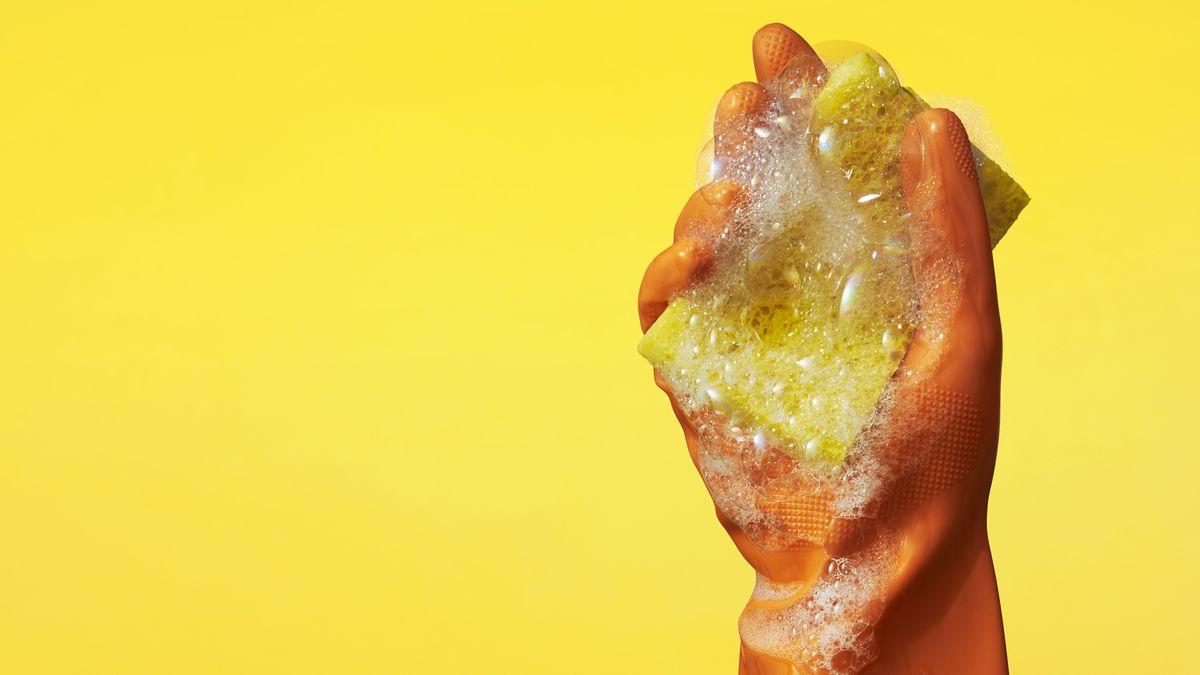

The 15 Best Natural and Organic Sunscreens

The Best Mosquito Repellents
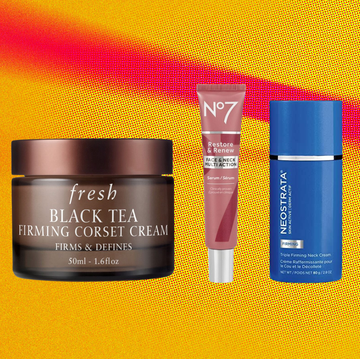
The Best Neck Firming Creams
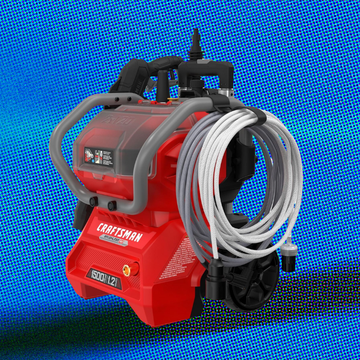
The Best Pressure Washers

